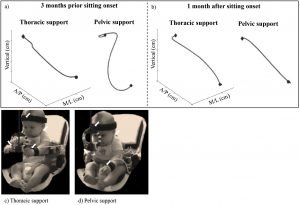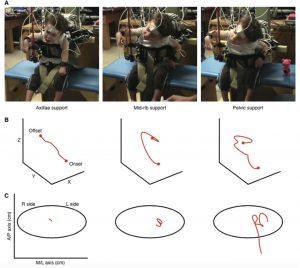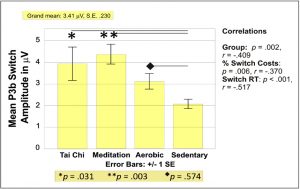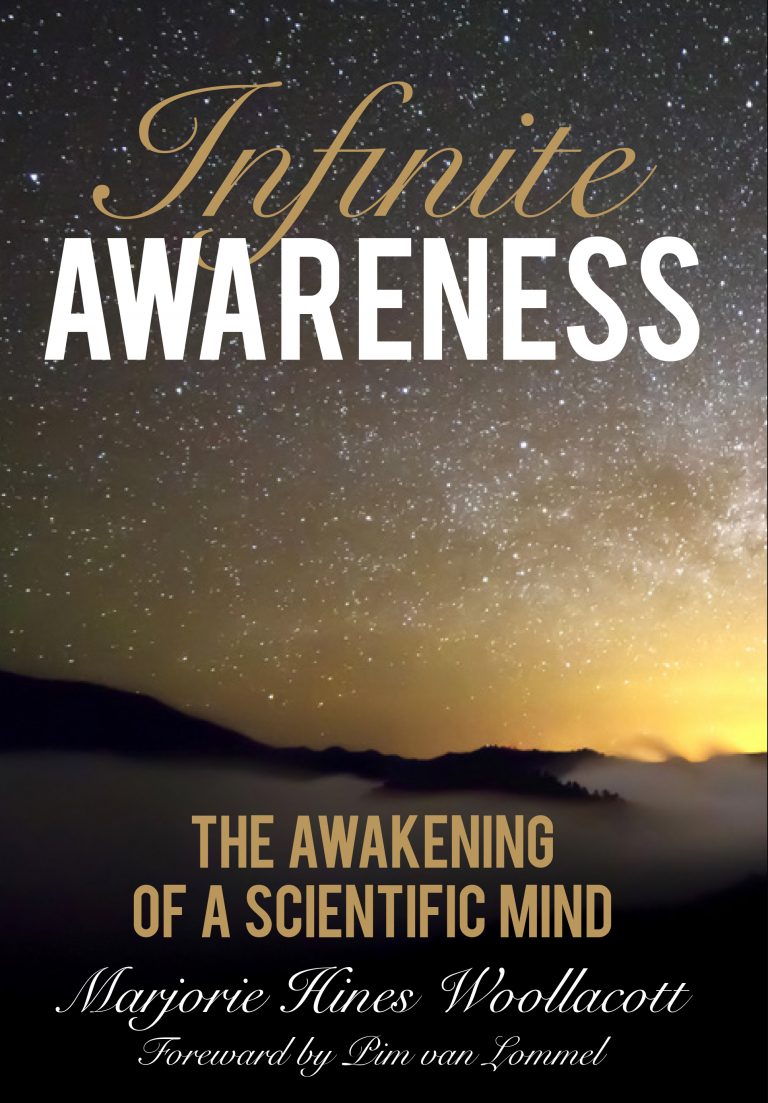Research Highlights
What Are the Neural Correlates of Mystical Experience?
(Publication: Woollacott, MH, Shumway-Cook, A. The Mystical Experience and Its Neural Correlates, Journal of Near-Death Studies, 38:1, 3-25. Spring 2020)
Three types of mystical experience, near-death experiences, psilocybin experiences, and meditative experiences of cosmic consciousness—appear to have certain attributes in common, including an experience of expanded awareness. All three also appear to be associated with profound and lasting transformations in the lives of experiencers.
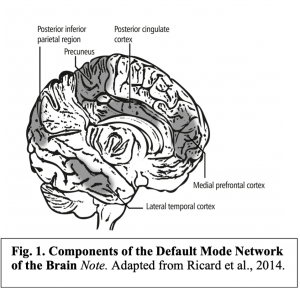 In the study we discuss similarities in case studies and clinical research regarding these three experience types, as well as similarities in neurophysiological data correlated with the occurrence of the experiences themselves. In all three, research shows a reduction in neural activity in the major centers of the brain, including the Default Mode Network (DMN).
In the study we discuss similarities in case studies and clinical research regarding these three experience types, as well as similarities in neurophysiological data correlated with the occurrence of the experiences themselves. In all three, research shows a reduction in neural activity in the major centers of the brain, including the Default Mode Network (DMN).
Background: Research suggests that an individual’s normal mental state is highly influenced by the wide-ranging DMN also called the narrative or Mind Wandering Network of the brain. This is considered by many neuroscientists to be the source of the ego—the notion of self and our identification with the thoughts, emotions, and roles we play in the world (Carhart-Harris & Friston, 2010). Figure 1 illustrates activation patterns during brain scans when people are simply relaxing, letting the mind go where it wants. It illustrates components of the DMN including the medial prefrontal cortex, and the posterior cingulate cortex.
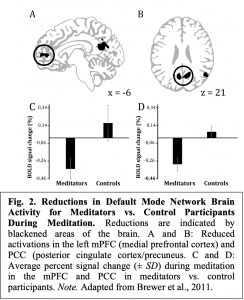 Griffiths has suggested that mystical experiences that produce a sense of unity are associated with ego-dissolution, i.e., a sense that the border between one’s self and the external world is dissolving. His research shows a high correlation between a sense of unity consciousness and reduced DMN activity (Barrett & Griffiths, 2018). Other researchers have found similar results in studies of deep meditation (Brewer et al., 2011). They compared functional magnetic resonance imaging (fMRI) scans of brain activity in the DMN in advanced meditators and control participants during meditation. As Figure 2 shows, they found that the main nodes of the DMN were relatively deactivated in meditators compared to controls.
Griffiths has suggested that mystical experiences that produce a sense of unity are associated with ego-dissolution, i.e., a sense that the border between one’s self and the external world is dissolving. His research shows a high correlation between a sense of unity consciousness and reduced DMN activity (Barrett & Griffiths, 2018). Other researchers have found similar results in studies of deep meditation (Brewer et al., 2011). They compared functional magnetic resonance imaging (fMRI) scans of brain activity in the DMN in advanced meditators and control participants during meditation. As Figure 2 shows, they found that the main nodes of the DMN were relatively deactivated in meditators compared to controls.
Interestingly, a number of studies on psilocybin’s effects on brain networks show effects similar to those of meditation (Barrett & Griffiths, 2018; Carhart-Harris et al., 2012; Thomas et al., 2017).
This reduction in DMN brain activity is directly correlated with an increased sense of unity consciousness and ego-dissolution. In addition, though brain imaging studies are not feasible when a near-death experience (NDE) occurs during cardiac arrest, EEG data show that the entire cortex, including the DMN, is deactivated (van Lommel et al., 2001).
Filter Theory and Mystical Experiences. Brain filtering networks are normally helpful in daily life as they limit sensory information to reduce the processing demands on the brain. (Broadbent, 1958; Kelly et al., 2007). The DMN serves as one of these filters, as it habitually restricts awareness and maintains attention on the ongoing self-referential narratives of the brain. We propose that during at least the three experiences we have discussed, when the DMN activity is lower, filtering is reduced, resulting in expanded awareness and the capacity to perceive mystical phenomena. A number of researchers (Parnia, 2014; Sartori, 2008; van Lommel et al., 2001) have documented that during cardiac arrest, despite a flatlined EEG, some individuals experience perceptions outside of the body. One explanation for this phenomenon is that during this type of NDE, filters that normally block out expansive states of consciousness that go beyond the experience of the five senses are no longer active.
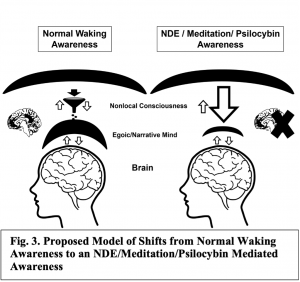 We propose a possible model that reflects what happens when an individual shifts from the normal DMN and egoic narrative that normally dominates waking consciousness to a mystical experience of cosmic consciousness. This model is shown in Figure 3. In the normal waking state, dominated by the DMN, the capacity to experience nonlocal cosmic consciousness appears to be reduced. This is represented by a type of filter that limits access to awareness of subtler perceptions. Although most scientists agree that such a filter exists as part of normal human brain activity, including the DMN (Broadbent, 1958), there is no agreement as to the role this type of filter plays in mystical experience. We propose that when activity in the DMN is reduced—as during meditation or psilocybin experiences—or removed—as during NDEs, the filter is also reduced or eliminated, and there is enhanced capacity to experience nonlocal (cosmic) consciousness. In the figure, this process is represented by the reduced mental activity and increased input flowing from nonlocal consciousness down to the mind and brain (large arrow). When this process occurs, the person experiences a sense of expansive awareness, peace, and often unconditional love. Most importantly, these experiences are associated with transformational changes that appear to persist and even grow over the coming months and years.
We propose a possible model that reflects what happens when an individual shifts from the normal DMN and egoic narrative that normally dominates waking consciousness to a mystical experience of cosmic consciousness. This model is shown in Figure 3. In the normal waking state, dominated by the DMN, the capacity to experience nonlocal cosmic consciousness appears to be reduced. This is represented by a type of filter that limits access to awareness of subtler perceptions. Although most scientists agree that such a filter exists as part of normal human brain activity, including the DMN (Broadbent, 1958), there is no agreement as to the role this type of filter plays in mystical experience. We propose that when activity in the DMN is reduced—as during meditation or psilocybin experiences—or removed—as during NDEs, the filter is also reduced or eliminated, and there is enhanced capacity to experience nonlocal (cosmic) consciousness. In the figure, this process is represented by the reduced mental activity and increased input flowing from nonlocal consciousness down to the mind and brain (large arrow). When this process occurs, the person experiences a sense of expansive awareness, peace, and often unconditional love. Most importantly, these experiences are associated with transformational changes that appear to persist and even grow over the coming months and years.
Do meditation and Tai Chi Improve the Neural Substrates of Attentional Function?
(Publication: Hawkes TD, Manselle W, Woollacott MH. Tai Chi and meditation-plus-exercise benefit neural substrates of executive function. A cross-sectional, controlled study. Journal of Complementary and Integrative Medicine; 11(4):279-88. 2014.)
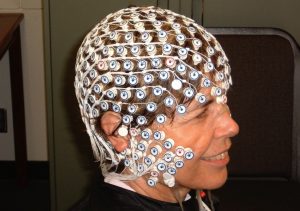
This study compared the EEG Event-Related- Potential activity of individuals with long-term training in Tai Chi, meditation plus exercise, or aerobic exercise alone, to individuals practicing a sedentary lifestyle on the performance of a complex attentional task (the visuo-spatial task switch test).
Results showed that the Tai Chi and meditation trained groups were more efficient at the task switch test, with lower switch costs in their performance. This was also associated with brain EEG event-related potentials that were significantly larger than those of the sedentary or aerobic exercise trained groups, as you see in the figure, above (P3b in the figure refers to the timing of the brain electrical potential).
Does Increased Level of Meditation Experience Correlate with Improved Attentional Focus?
(Publication: Chan D, Woollacott M.H. Effects of level of meditation experience on attentional focus: is the efficiency of executive or orientation networks improved? J. Alternative and Complementary Medicine 2007; 13:651-657.)
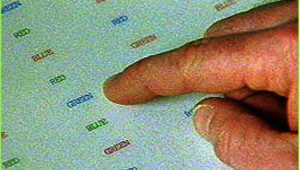
This study explored which attentional brain networks are improved by meditation experience, and whether their performance is correlated with intensity of meditation practice. Meditators were compared to control subjects on the Stroop test, a test of the ability to ignore attentional distractors in a conflict situation. (The Stroop test requires that you inhibit the impulse to say, for example the word “green” that is printed and instead name the color (blue) it is printed in).
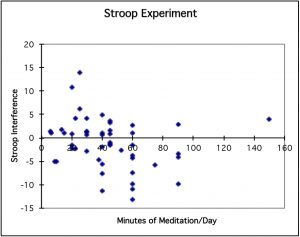
Meditators had significantly less interference on the test: they were faster at correctly naming the color, when there was a conflict between the name of the word and colors, suggesting executive attention networks are improved. In addition, those that meditated more minutes/day had less interference on the Stroop task (as you see in the figure, above).
How Important is Sitting Balance Control for Learning to Reach?
(Publication: Rachwani J, Santamaria V, Saavedra SL, Woollacott MH. The development of trunk control and its relation to reaching in infancy: a longitudinal study. Front Hum Neurosci. 2015 Feb 24;9:94. Santamaria et al. The Impact of Segmental Trunk Support on Posture and Reaching in Children with Cerebral Palsy, Journal of Pediatric Physical Therapy, in press.)
In this study, we examined infants longitudinally from 2.5-8 mos of age while they reached for a toy. This is the critical period during which they learn to sit. We gave each infant 2 levels of trunk support when they came to the lab, to see if reaching early in development would improve if we increased trunk control by giving them extra support. As you see in the figure, at 3 mos. before reaching, the infant’s reaching trajectory (A) was much better with higher (thoracic) support, but at 1 mo. after reaching onset, trunk control had improved so additional support did not improve reaching (B). In a child with cerebral palsy (next figure), support, either at the ribs or under the arms (axillae), also improved reaching (B) and underlying trunk control C).
